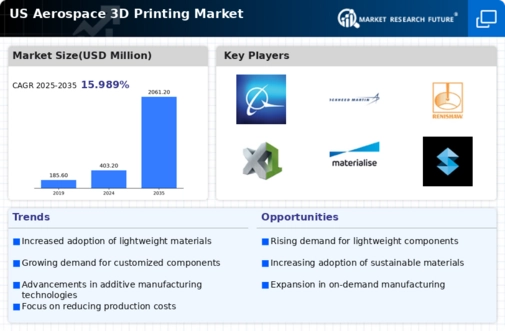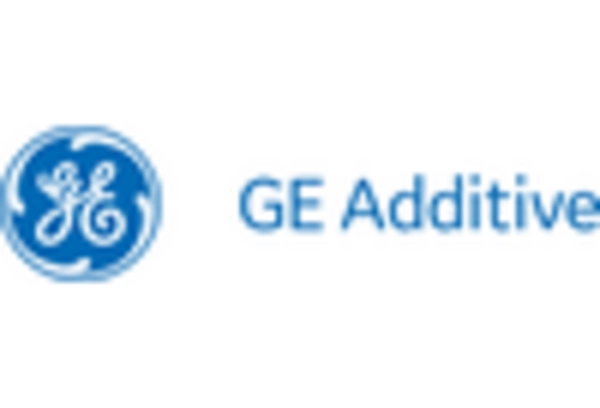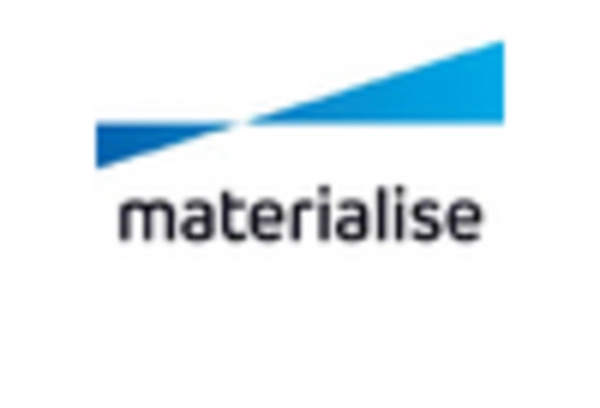The aerospace 3d-printing market is currently characterized by a dynamic competitive landscape, driven by technological advancements and increasing demand for lightweight, complex components. Major players such as Stratasys (US), GE Additive (US), and Boeing (US) are at the forefront, each adopting distinct strategies to enhance their market positioning. Stratasys (US) focuses on innovation through the development of advanced materials and processes, while GE Additive (US) emphasizes partnerships with aerospace manufacturers to integrate additive manufacturing into their production lines. Boeing (US), on the other hand, is leveraging its extensive experience in aerospace to explore new applications of 3D printing in aircraft design and production, thereby shaping the competitive environment through a blend of innovation and strategic collaborations.
Key business tactics within this market include localizing manufacturing and optimizing supply chains to enhance efficiency and reduce lead times. The competitive structure appears moderately fragmented, with several key players exerting influence over various segments. This fragmentation allows for a diverse range of offerings, yet the collective impact of major companies like Northrop Grumman (US) and 3D Systems (US) is significant, as they drive technological advancements and set industry standards.
In October 2025, Northrop Grumman (US) announced a strategic partnership with a leading materials science company to develop next-generation 3D printing materials specifically designed for aerospace applications. This collaboration is poised to enhance the performance and reliability of components produced through additive manufacturing, indicating a strong commitment to innovation and quality in the aerospace sector. Such partnerships may also facilitate the integration of advanced materials into existing production processes, thereby streamlining operations.
In September 2025, 3D Systems (US) unveiled a new line of 3D printers tailored for the aerospace industry, featuring enhanced speed and precision. This launch reflects the company's focus on meeting the growing demand for rapid prototyping and production of complex parts. By investing in cutting-edge technology, 3D Systems (US) aims to solidify its position as a leader in the aerospace 3d-printing market, potentially attracting new clients seeking efficient manufacturing solutions.
In August 2025, Boeing (US) revealed its plans to expand its 3D printing capabilities by establishing a new facility dedicated to additive manufacturing in the Midwest. This strategic move is expected to bolster Boeing's production capacity and reduce costs associated with traditional manufacturing methods. The establishment of this facility underscores Boeing's commitment to integrating 3D printing into its supply chain, which may enhance its competitive edge in the aerospace sector.
As of November 2025, current trends in the aerospace 3d-printing market include a strong emphasis on digitalization, sustainability, and the integration of artificial intelligence (AI) into manufacturing processes. Strategic alliances are increasingly shaping the landscape, as companies recognize the value of collaboration in driving innovation. Looking ahead, competitive differentiation is likely to evolve, with a shift from price-based competition to a focus on technological advancements, innovation, and supply chain reliability. This transition may redefine how companies position themselves in the market, emphasizing the importance of quality and performance over cost alone.

















Leave a Comment